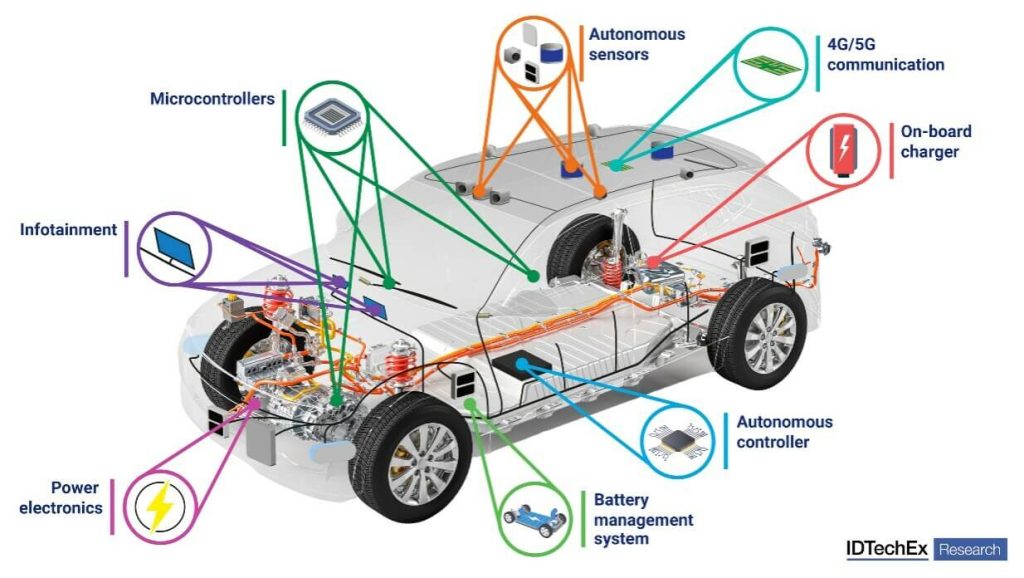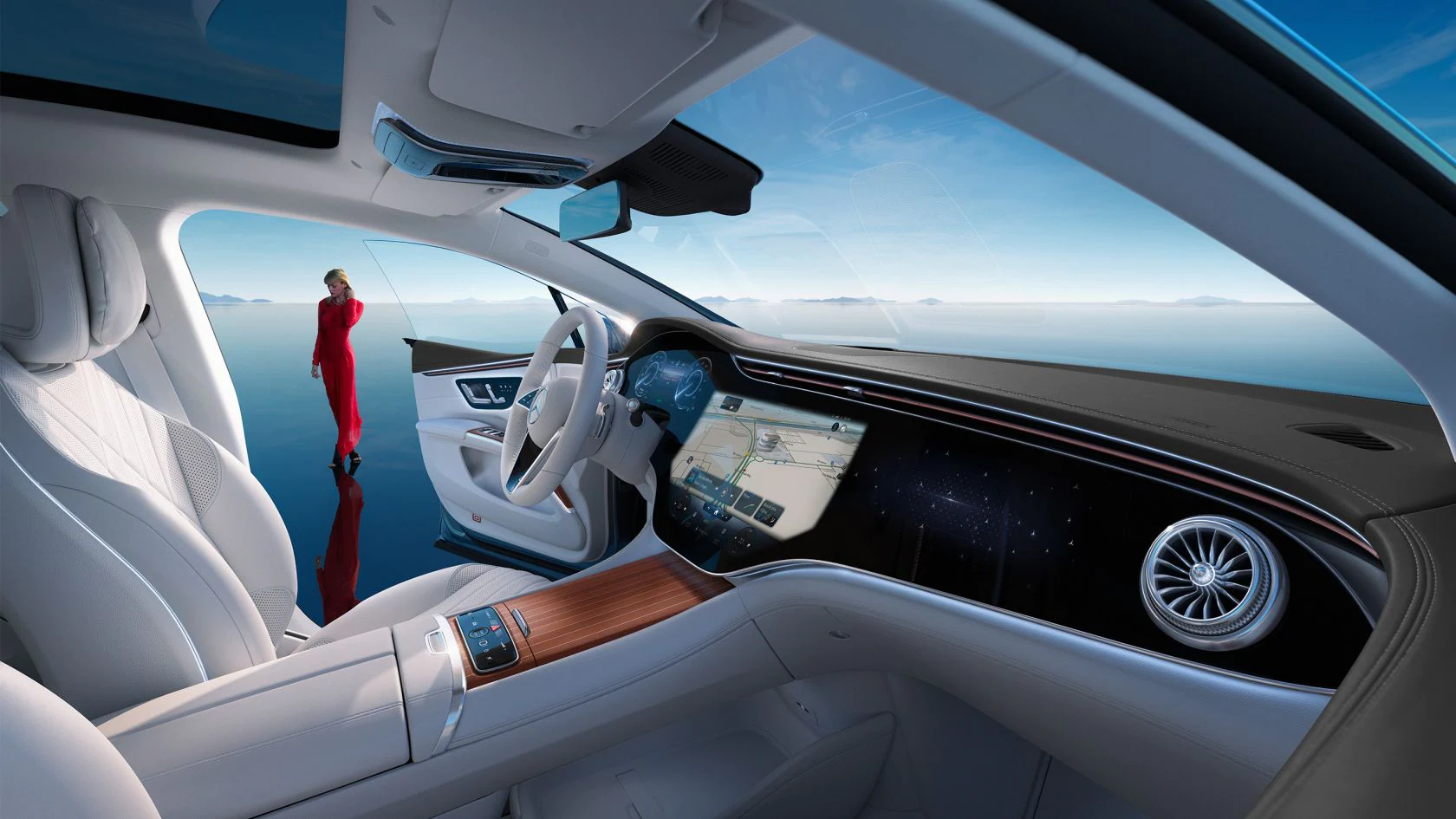Computer chips have been part of cars for a long time, but no one really cares about them until they stop working or they are late to the production line, grinding manufacturing to an industry-shaking halt. However, the research within IDTechEx shows that trends within the automotive industry mean consumers will soon be caring far more about what chips are in their cars. IDTechEx expects that purchasing a new vehicle will soon feel like shopping for a new laptop.
What are the main concerns when buying a laptop? For most people, it will be things like how long the battery will last, how nice the screens are, and what computer chip it comes with. Evaluating a vehicle’s worth based on the number of cylinders, horsepower, and miles per gallon will soon be irrelevant. We already know that electric vehicles will be dominating the market soon, ticking off the choice of vehicle based on how long the battery lasts, but what about the other two criteria?
It has been hard to escape the screenification of car cabins over the past few years. Even the cheapest cars on the market are available with some kind of central display, while the top end of the market is heading towards pillar-to-pillar style screens in the front. When IDTechEx attended CES, it was clear to see that the future cabin interior would be filled with screens. While this might sound exciting at the outset, consumers should be aware that for the automotive industry, this is a means to an end, where the end is extracting more money from drivers. The screens will facilitate more premium features in the vehicle and likely more subscriptions.

Like laptops, vehicles are also becoming gaming devices. Look at Tesla, for instance; it generated waves when it showed the Model S could run steam on its infotainment system, showing how Witcher 3 can be played when the vehicle is stationary. Mercedes went one step further; now that it has level 3 certification in both the US and Germany, it is possible for the driver to play video games while the car drives itself, up to a speed of 40mph. However, where Tesla is playing games one might expect of a modern gaming laptop, the Mercedes allows the play of Tetris, Sudoku, and some mobile gaming titles. Perhaps Mercedes will need to step up its game.
As cool as it might be, gaming in vehicles is perhaps a gimmick or novelty. The real computation power in modern and future vehicles will be used to drive autonomous systems. IDTechEx found that this is where the most advanced semiconductor technologies are being used. Most computer chips around the vehicle, the kind that are used to open windows or adjust wing mirrors, use quite mature technologies.
These chips have node sizes normally above 40nm (nanometers). Modern smartphones, on the other hand, have chips that use a 4nm process, with smaller processes offering more computing power. However, the coming chips that will power autonomous driving systems will be much closer to the cutting edge, using technologies in the 1-5nm region.
This is where laptops come back in. A high-performance gaming laptop might be using a graphics card from Nvidia, giants in the gaming industry. The graphics cards take information from the CPU and turn it into an image for the screen. One of the main computational tasks for an autonomous vehicle is to take data from each of the cameras, radar, LiDAR, etc., and turn it into a 3D map of the environment and identify all the vehicles and all the people around the vehicle.
These two processes are rather similar, and it means that Nvidia have been able to expand into the automotive space, offering top-end, high-performance computing for autonomous applications. Their recent announcement regarding the planned Thor product with 2,000 TOPS of computing power is an order of magnitude more powerful than most of the chips on the market today aimed at ADAS (advanced driver assistance systems) applications.
The industry is already starting to market its models based on the performance of its autonomous features. Polestar, the electric branch of Swedish automaker Volvo, have recently added details about its front-sensing capabilities to its advertising campaign. It boasts that its front radar/camera combination has a range of 200m and a field of view of 45˚. This is fairly new, and it is hard to think of another car company advertising based on its sensing capabilities. That also makes it hard to benchmark. All electric cars are marketed based on the range their batteries can deliver, making it easy to compare. But if only one is advertising the range and field of view of its sensing, how does one know whether it is any good?
In the future, automakers like Mercedes and BMW will be selling vehicles with marketing like Nvidia inside or Mobileye inside, just like a laptop might be bought that says intel inside today. They will become system integrators, like how Lenovo will buy CPUs from Intel or AMD, RAM from Microchips, and screens from LG and put them together into its own packaging. Automakers will buy an electric powertrain from one company and an autonomous system from another and bundle it into their branded packaging. This means consumers will choose cars based on how long the battery will last, how nice the screens are, and what computer chip it comes with.

